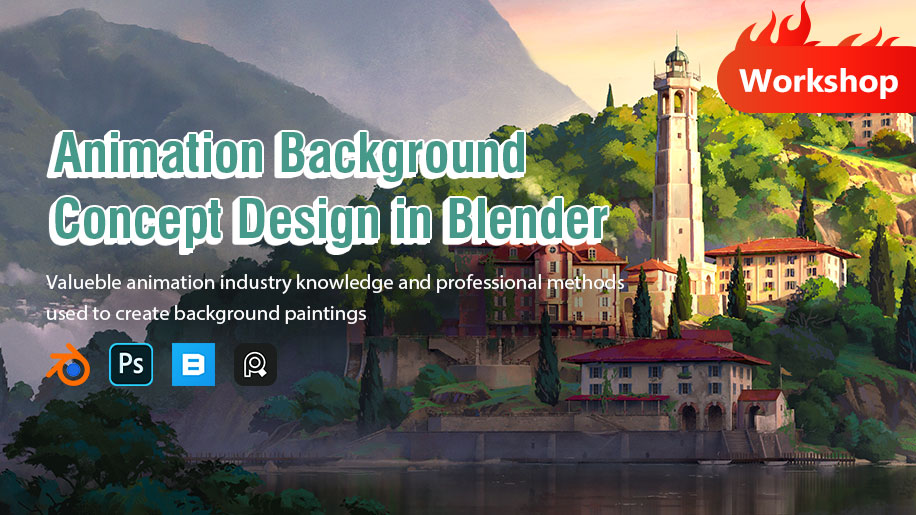Game art: Difference between Realistic and Stylized
If you’re a loyal fan of our Wingfox blog, you’ve noticed that we’ve posted articles on realistic and stylized character creation. You may not have a deep understanding of the difference between them. Well, this article will answer your questions and give you a better understanding of character drawing styles.
Realistic & stylized
When we talk about realism and stylization, what do we mean? It seems obvious that realism means realistic graphics that mimic realism. It doesn’t necessarily need to exist in the real world, but to be communicated as if it belongs in our world.10 What we thought looked realistic a year ago is not the same today, and for some, it may even look stylized, chosen in response to technical limitations.
Many of the particularly popular games appear very realistic. They have more vibrant colors, light and atmosphere than similar environments we see in everyday life, with more perfect weather and lighting conditions. Just like movies and photos, post-processing and enhancement means are used to create a more interesting scene and look and feel.
Real life can look rather dull and boring, and if movies, photos or games don’t look appealing enough, they won’t sell well. When we as an artist imitate a real picture, we are imitating an enhanced reality with perfect scenery, colors, lighting and atmosphere. This is what makes the player feel like it belongs in our real world.

Stylized game art has also changed because of these new technical considerations. From being limited to low-models with face counts and using only diffuse maps as input, to the use of high face counts, shaders and materials, stylization is now booming.
These approaches look similar, but their results are now really different due to the absence of restrictions. The significant difference between realism and stylization is that with realism you are limited to making things look “real” by reinforcing their visual language.
With stylization, you have the freedom to play with shapes and colors, exaggerate or remove details, and enhance the look and feel in any direction. Doing so will break the illusion of reality because it will no longer be seen as realistic, it will not belong to our world.
In short, you could say that realism itself is a form of stylization, nothing is truly realistic, it just appears realistic within the limits of today’s technology.
Challenges of creating stylized images
The challenge of stylized game art is to convey typical assets, environments, and characters to the player with less detail and an emphasis on shape, color, and form. Everyone knows what a birch tree looks like; you’ve probably seen them in real life, movies, or photos. You can only imagine what a stylized birch tree would look like by imagining what it would look like, which will vary greatly depending on the style and artist sought.
Stylization is a visual depiction of an object without sufficient attempt to represent it accurately as it is. This includes simplification in terms of shape, line, color, pattern, surface detail, function, and relationship to other objects in the scene. This is why stylization is most often used to describe an art style that has more cartoonish characteristics than a semi-realistic style, which usually adheres to realistic details rather than simplification. Because stylized graphics are so diverse, there is no single guideline for creating game art styles.
Silhouettes
Silhouettes are very important for any object, whether it is a simple object, a more complex shape, or a person. We must be able to identify an object, even those considered to be of unknown origin, and they should be recognizable from the start.
Details
The points on a modeling model can be microscopic surface details or small details, depending on the size of the model and the impact on it. A crack can even be a huge detail if it changes the shape or contour of the asset.
References
When looking at your references, break assets into categories, such as the example above, to determine which assets are large, medium, small, and micro-surface details to help you in the process of creating your assets. It may seem obvious to start with larger shapes and end with smaller and finish with smaller details, but this is a common mistake that artists make, especially when focusing too much on specific areas of the asset rather than the asset as a whole.
A stylized object seems to have less detail and larger shapes, which means it is easier to create and texture. With new methods like PBR, realistic and stylized work methods become very similar, as PBR sets guidelines for the creation of textures and materials.
In stylization, you are free to enhance details, such as adding highlights and gaps in the texture to emphasize depth. It’s a stylistic choice and you shouldn’t be afraid to try to add detail as long as it doesn’t ruin the lighting in the scene. PBR acts as a guideline but doesn’t set the bar in any way, there are different approaches to pbr and the input is different in all engines. As an artist, it may be easy to forget that these are not fixed rules and that you have artistic freedom to enhance and emphasize elements in your work.
Before you start, make sure you figure out your references and categorize assets, environments, or characters before modeling. List and draw details for large, medium, small, and micro surfaces in your document. No matter what style you use, this is equally important to ensure you capture the essence and core of the object. This is helpful throughout the creative process because you have defined your guidelines, reduced interruptions in your workflow, as well as analyzed important details you may not have been aware of.
As a conclusion, please remember that there is no single correct way to create assets, whether realistic or stylized, what matters is the end result; how successfully you communicate the core and essence of the assets in the game to the player.
Wingfox
If you want to know more about the game art, you can keep following our blog. Also, there are a lot of excellent and wonderful game art tutorials on Wingfox waiting for you to learn. If you are interested, come and join Wingfox.
Post a Comment
要发表评论,您必须先登录。
















Pingback: As a Beginner,How to Sell My Digital Art? - Wingfox
2022-02-16Pingback: How to protect digital art - Wingfox
2022-02-16Pingback: Game art: Difference between Realistic and Styl...
2022-02-21